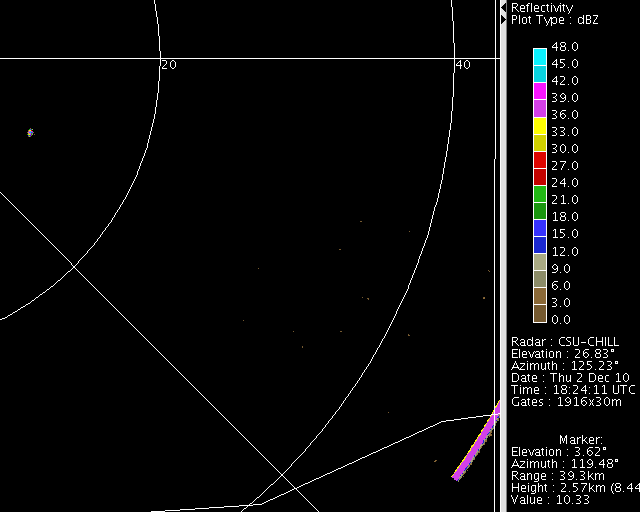Radar calibration sphere flight: 2 December 2010
Overview
On December 2nd 2010 a sphere calibration was conducted at the radar. Sphere calibrations are fairly unique in that they test the entire radar, both transmitter and receiver. The provide a measurement of the antenna gain - waveguide loss. This measurement is required to calculate absolute reflectivity. The sphere calibration should agree with and lend support to antenna gain - receiver loss measurements provided by solar or standard gain horn calibrations.
Introduction
The preferred sphere cal method used here is the free-flying sphere cal. A 12.5 inch diameter Styrofoam sphere is wrapped with aluminum foil and suspended below a 600 gram helium filled balloon. The balloon is then released and tracked optically, at first, with a theodolite. Once the sphere has traveled 5 or so kilometers downwind of the radar, it's position is relayed to the radar operator, who sets a tight sector scan to cover the sphere's position.
The main advantage of the free-flying sphere calibration is that the sphere is carried up to elevation angles which are well above any interference from ground targets, which are often a problem with tethered sphere calibrations.
It is important to setup the radar for over-sampling of the sphere. On CHILL the pulse length can be set to one microsecond, at the same time the receiver sample spacing can be set to 30 meters or 0.2 microseconds. This assures that there will always be a gate situated at a range which is optimal for capturing the peak return from the sphere. The sector scans are also adjusted to over-sample in azimuth and elevation. Specifically, they are set to provide 0.1 degree sample spacing in azimuth and elevation.
In processing the data, the returned power from the sphere is converted to gain.
Reflectivity loop
|
|
||
|
